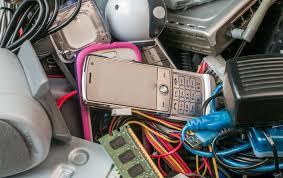In recent years, gadgets have become more than just tools for communication or entertainment. They are now actively contributing to global environmental conservation efforts. With climate change and sustainability at the forefront of global discussions, technology companies are developing gadgets that not only make life easier but also reduce human impact on the planet. From smart home devices that lower energy consumption to wearables that encourage eco-friendly habits, gadgets are playing a key role in promoting greener lifestyles and supporting broader conservation goals.
Energy Efficiency through Smart Devices
One of the most significant contributions of gadgets to environmental conservation is in reducing energy consumption. Smart home technologies have transformed the way individuals use electricity and manage resources.
Examples include:
- Smart thermostats that automatically adjust heating and cooling to reduce waste.
- Energy-efficient smart bulbs that consume far less power than traditional lighting.
- Smart plugs that turn off idle appliances to prevent unnecessary energy use.
These innovations not only lower electricity bills but also reduce greenhouse gas emissions by cutting overall demand on power grids.
Gadgets Supporting Renewable Energy
Gadgets are also playing a vital role in promoting the adoption of renewable energy. Solar-powered gadgets, for instance, have become more popular and affordable, helping individuals reduce reliance on fossil fuels.
Future-oriented trends include:
- Portable solar chargers for mobile devices, reducing dependence on grid electricity.
- Solar-powered outdoor lights for homes and public spaces.
- Integration of smart gadgets with home solar panels for efficient energy management.
By making renewable energy more accessible, these gadgets support a transition to cleaner and more sustainable energy systems.
Reducing Waste with Eco-Friendly Gadgets
E-waste is a growing environmental concern, but many gadget manufacturers are addressing this issue by developing products designed to last longer and produce less waste. Gadgets are being created with sustainability in mind, both in materials and production methods.
Key practices include:
- Devices made from recycled or biodegradable materials.
- Modular gadgets that allow parts to be replaced instead of discarding the whole device.
- Trade-in and recycling programs that ensure old gadgets are reused or properly disposed of.
Such initiatives not only reduce landfill waste but also conserve valuable resources like rare earth metals.
Smart Gadgets for Water Conservation
Beyond energy, gadgets are helping conserve another vital resource: water. With global concerns over water scarcity, smart technologies are being used to monitor and manage usage efficiently.
Examples include:
- Smart irrigation systems that adjust watering schedules based on weather conditions.
- Water leak detectors that alert homeowners to prevent wastage.
- Smart showerheads that regulate water flow without compromising comfort.
These gadgets are particularly impactful in regions facing drought and help households and industries reduce unnecessary water consumption.
Monitoring Environmental Changes
Another important contribution of gadgets is in tracking and monitoring environmental changes. Portable environmental sensors and wearable gadgets now allow individuals and organizations to measure air quality, temperature fluctuations, and pollution levels.
These devices are used for:
- Personal health monitoring, especially for people living in polluted urban areas.
- Data collection for researchers studying climate and environmental shifts.
- Community-driven initiatives to promote cleaner and healthier neighborhoods.
By gathering real-time data, gadgets empower both individuals and policymakers to make informed decisions on conservation efforts.
Encouraging Sustainable Lifestyles
Many gadgets are designed to encourage individuals to adopt greener habits in their daily lives. With the help of applications and smart tracking devices, people are becoming more aware of their environmental footprint.
Common uses include:
- Apps that track energy and water consumption and suggest ways to cut back.
- Wearables that reward eco-friendly actions, such as biking or walking instead of driving.
- Gadgets that promote recycling by scanning and sorting waste properly.
These tools turn conservation into a personal, measurable activity, motivating people to make sustainable choices.
Smart Transportation Gadgets
Transportation contributes significantly to carbon emissions, but gadgets are driving innovations toward greener mobility. Electric vehicle gadgets and mobility trackers are reshaping how people commute and travel.
Examples include:
- Electric bike gadgets that monitor battery usage and encourage efficient riding.
- Vehicle tracking apps that optimize routes to reduce fuel consumption.
- Charging station finders that make electric vehicles more practical for everyday use.
Such gadgets not only reduce personal carbon footprints but also support broader efforts to reduce dependence on fossil fuels.
Artificial Intelligence and Automation in Conservation
The role of artificial intelligence in gadgets is also transforming environmental conservation. AI-powered devices can analyze usage patterns and automate conservation-friendly adjustments.
Applications include:
- Automated energy management systems that learn user behaviors to minimize waste.
- Smart city gadgets that monitor traffic, waste disposal, and energy use to improve urban sustainability.
- AI-driven environmental monitoring drones for large-scale data collection in forests, oceans, and agricultural lands.
By combining machine learning with gadgets, conservation efforts can become more proactive and effective.
Challenges and Limitations
While gadgets are contributing to environmental conservation, there are still challenges to address. The production and disposal of gadgets themselves can have negative environmental impacts. Mining for rare metals, high energy manufacturing processes, and improper disposal practices remain significant issues.
Future efforts should focus on:
- Expanding recycling and take-back programs.
- Using renewable energy in gadget manufacturing.
- Designing gadgets with circular economy principles to minimize waste.
Balancing technological innovation with environmental responsibility will be key to maximizing their positive impact.
Conclusion
Gadgets are no longer just luxury items but powerful tools that contribute to global environmental conservation efforts. By enhancing energy efficiency, supporting renewable energy, reducing waste, conserving water, and encouraging sustainable living, they are shaping a greener future. Innovations in AI and smart technologies are set to expand their role further, making environmental conservation a natural part of everyday life.
However, to achieve long-lasting benefits, challenges around e-waste and production impacts must also be addressed. With thoughtful innovation and responsible practices, gadgets can continue to support the fight against climate change and help build a more sustainable world.



